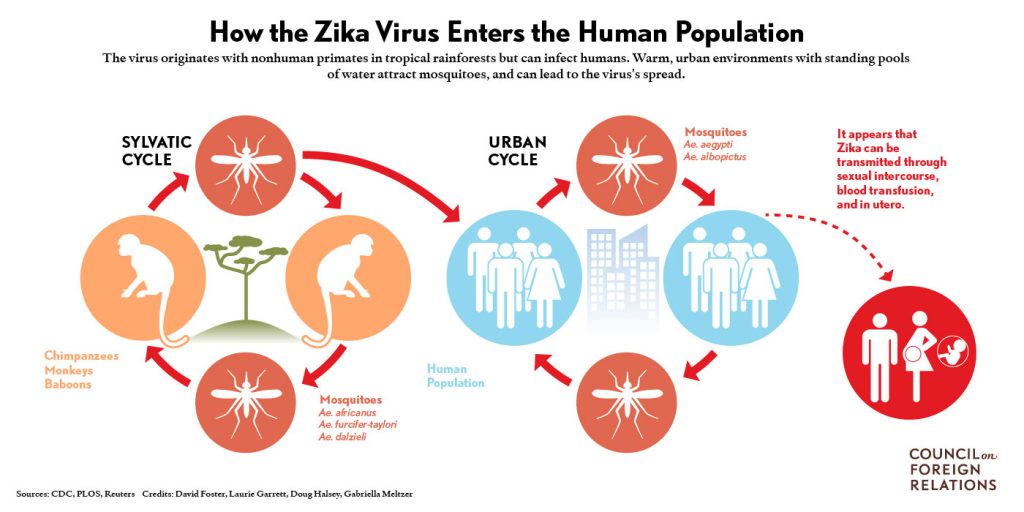By Mehreen Pasha ‘18
The Zika Virus has undergone outbreaks before 2015 in Africa, Southeast Asia, and the Pacific Islands. However, since May 2015, cases have appeared in Brazil and other parts of the world, as reported by the Center for Disease Prevention and Control (CDC). While no one in the United States has reported an outbreak, the CDC has recorded 426 travel-related cases. This virus poses a major threat to the rest of the world, especially with the upcoming Summer Olympics taking place in Rio de Janeiro.
The symptoms of the Zika Virus are similar to those of many other diseases: they include fever, rash, joint pain, and conjunctivitis (pink eye). These symptoms are fairly mild and appear about a week after getting bitten by an infected Aedes aegypti mosquito. As a result, the virus often goes undetected.
If the infected mosquito bites a woman while she is pregnant, the baby is also at risk; birth defects such as microcephaly — where babies are characterized by a smaller head and brain size — seem to be correlated to the virus. A recent study conducted on 88 pregnant Brazilian women ascertained that 30% of the infected women gave birth to “babies with fetal abnormalities… including small heads, damaged brain tissue, and low levels of amniotic fluid.”
Recently, researchers have determined the shape and structure of the virus — similar to that of a golf ball — which will potentially expedite the discovery of a cure for this virus. The mapping of this structure was conducted by Michael Rossmann and his colleagues at Purdue University. The researchers used a technique called cryo-electron microscopy, which develops an image revealing the kinds of sugars that reside on the virus’s surface.
The sugars cling to the proteins in the virus’s shell, which allows the virus to stick to and infect other cells. Moreover, “Zika’s sugar-decorated proteins ‘fold a little differently’ [Devika] Sirohi [a doctoral student at Purdue University] says…[letting] Zika make different contacts with attachment sites on cells, called receptors.” Irregular folding determines the function of a protein and thus is responsible for any abnormalities. This may be a viable explanation as to why Zika only infects particular cells in the body, namely AXL: a protein on neural stem cells involved in early brain development, as proposed by Arnold Kriegstein of the University of California.

Another interesting observation regarding the Zika virus involves monkeys in Brazil. According to recent findings, seven out of twenty-four marmosets and capuchin monkeys have harbored the disease and “might act as reservoirs for the virus.”

In the United States, various measures have been put forward to prevent the spread of the Zika virus. For instance, President Obama has requested $1.9 billion to be allocated for emergency funding regarding Zika, which Congress has yet to approve. In addition, a recent online petition has collected over 166,000 signatures protesting the release of genetically modified mosquitos (which cannot produce offspring) into the Florida Key in an attempt to hinder the spread of the virus.
While the scientific community may be far away from a viable solution to the Zika virus, one thing is certain: precautionary measures must be taken globally in order to prevent a rampant eruption of the Zika virus which could harm primates and humans around the world.

